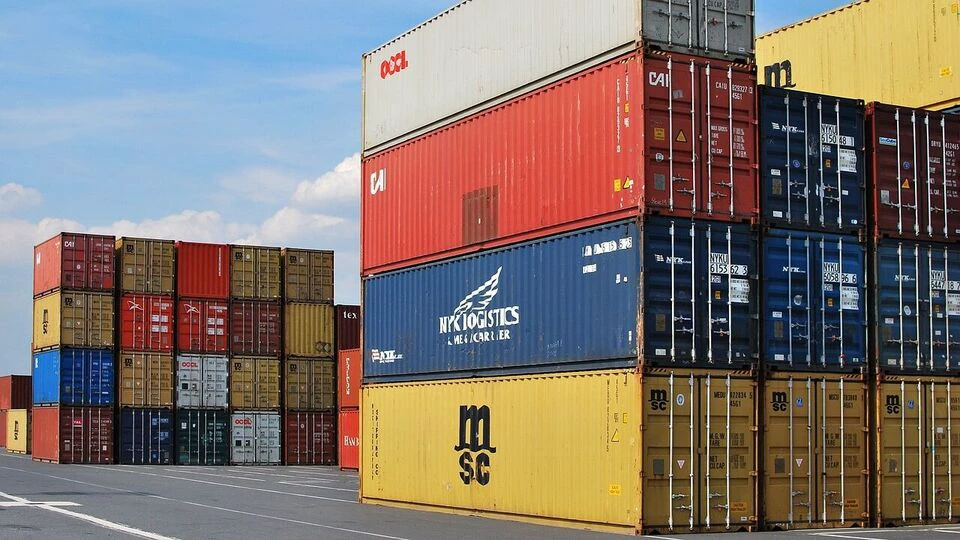New Delhi: India’s merchandise trade deficit narrowed to $21.88 billion in May from $26.42 billion in the previous month on the back of higher exports and a drop in imports, data released by the ministry of commerce and industry showed on Monday.
Merchandise exports fell to $38.73 billion in May from $39.59 billion in the year-ago period. Goods imports declined to $60.61 billion last month from $61.68 billion a year ago.
The merchandise trade deficit-the difference between exports and imports-stood at $22.09 billion in May 2024.
Economists had expected a trade deficit of $25 billion, according to a Reuters poll.
In April, the merchandise trade deficit rose to a five-month high of $26.42 billion on the back of higher imports, even as exports increased.
Following Trump’s tariffs and the India-Pakistan conflict, traders now face the challenge of escalating tensions in West Asia after Israel attacked Iran on 13 June.
The armed conflict between Iran and Israel has escalated concerns over the safety of cargo passing through the Strait of Hormuz and the Red Sea, a critical maritime corridor for Indian exports. Over two-thirds of India’s oil imports and almost half of its liquefied natural gas imports transit through the Strait of Hormuz.
The Israel-Iran attacks have increased shipment costs by up to 50% and threaten to disrupt trade routes across West Asia. Exporters and trade bodies have already flagged shipping delays, rising freight charges, and limited insurance coverage, officials said.
Geopolitical tensions
The latest conflict comes amid global trade tensions triggered after US President Donald Trump briefly imposed reciprocal tariffs on imports from key partners, including India, before pausing them to allow space for negotiations. The Trump administration has also levied a 10% universal tariff on all imports from every country.
India and the US are working out a limited trade deal to ease market access and tariff barriers-a modest but crucial step to lower India’s import bill.
In addition, the recent India-Pakistan conflict strained regional trade dynamics. Heightened tensions have halted formal exchanges, affecting border economies and informal trade channels. The instability also deters investor confidence in the region, compounding challenges for India’s trade outlook amid already rising import bills and global tariff uncertainties.
Services exports rose to $32.39 billion in May, from $29.61 billion in the same period of the previous year. Services imports stood at $17.14 billion, compared with $16.88 billion a year earlier.
The combined value of merchandise and services exports touched $71.12 billion in May, up from $69.20 billion a year ago.
India’s export drivers
Electronic goods, engineering goods, drugs and pharmaceuticals, organic and inorganic chemicals, and readymade textile garments were among the top exports in May. The top imports included petroleum and crude products, electronic goods, and machinery, according to the commerce ministry data.
Exports of electronic goods, including mobile phones, surged 54% in May, while chemical and pharmaceutical shipments grew 16% and 7.4% respectively, commerce secretary Sunil Barthwal said.
India’s major export destinations were the US, the UAE, the Netherlands, China and Singapore. China, the UAE, Russia, the US and Iraq remained the top suppliers, reflecting the country’s dependence on oil imports.
India’s non-petroleum exports in the April-May period, under merchandise trade, were valued at $64.25 billion, up from $59.75 billion in the year-ago period, while non-petroleum imports were valued at $90.06 billion in April-May, compared to $79.70 billion in the year-ago period.
Commerce secretary Sunil Barthwal told reporters that despite the global policy uncertainty and conflicts, exports have done well.
“So, there was a sustained fall in prices in petroleum (in the last two months), which has recorded a dampening impact on exports (India exports value-added/refined petroleum products). But if you look at the non-merchandise exports, for May, it has reported growth,” he said. “We are doing much better than the rest of the world. Despite the negative forecast given by WTO in its global trade outlook, India is doing (relatively) well.”
Barthwal acknowledged that global conflicts and uncertainties are impacting Indian exports, though the government is proactively working with exporters to address their concerns regarding shipping and insurance.
“In terms of strategy, you are also aware that we are focusing on certain countries, although it does not mean that we are not moving into new export markets,” Barthwal said. “We are always looking at new markets and new products.”
India is ramping up trade talks with the European Union and the US to boost market access, cut tariffs, and attract investment in sectors like tech and renewables.
Trade talks with the EU have regained momentum, while discussions with the US focus on resolving trade disputes and strengthening supply chains.
